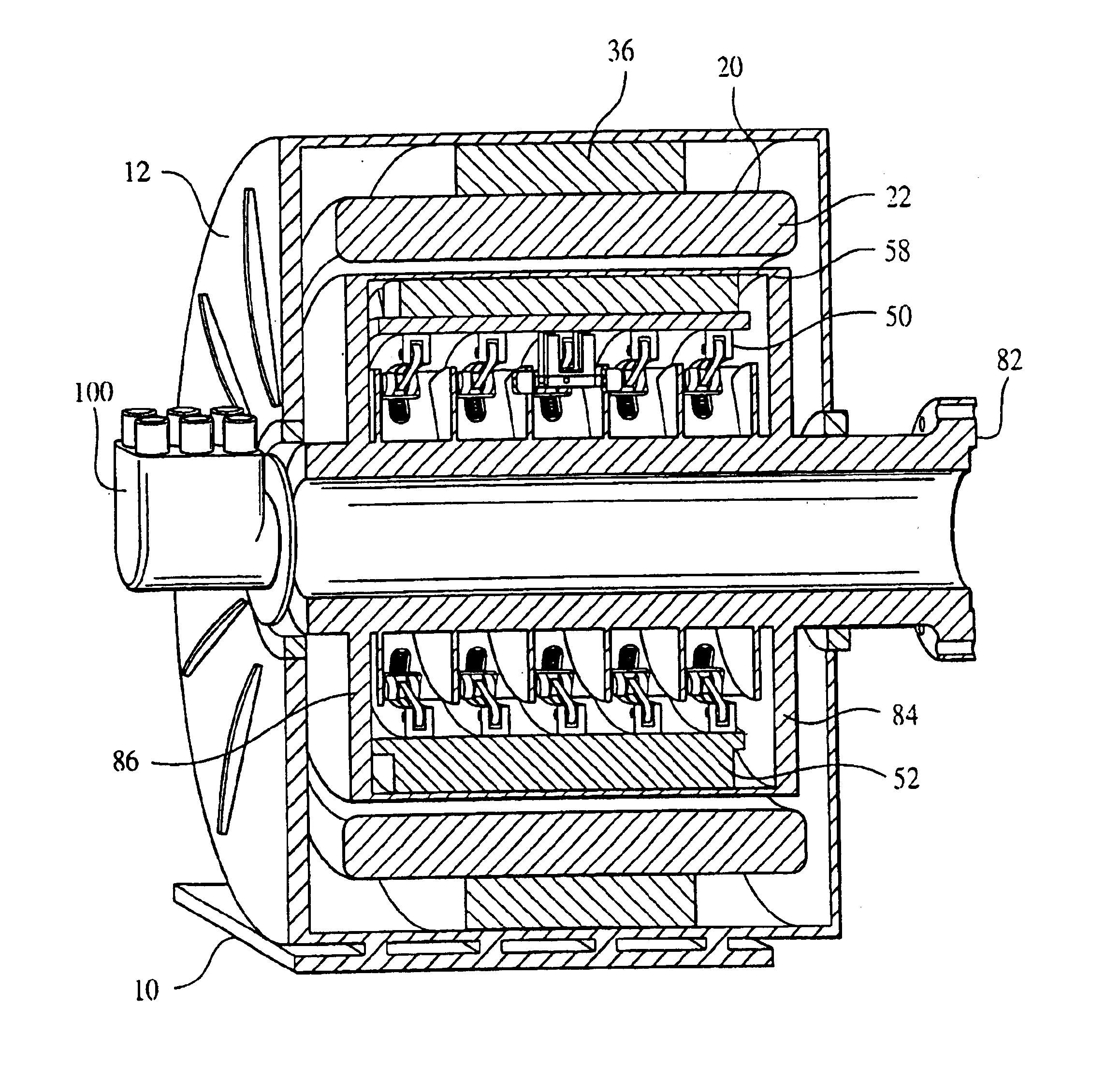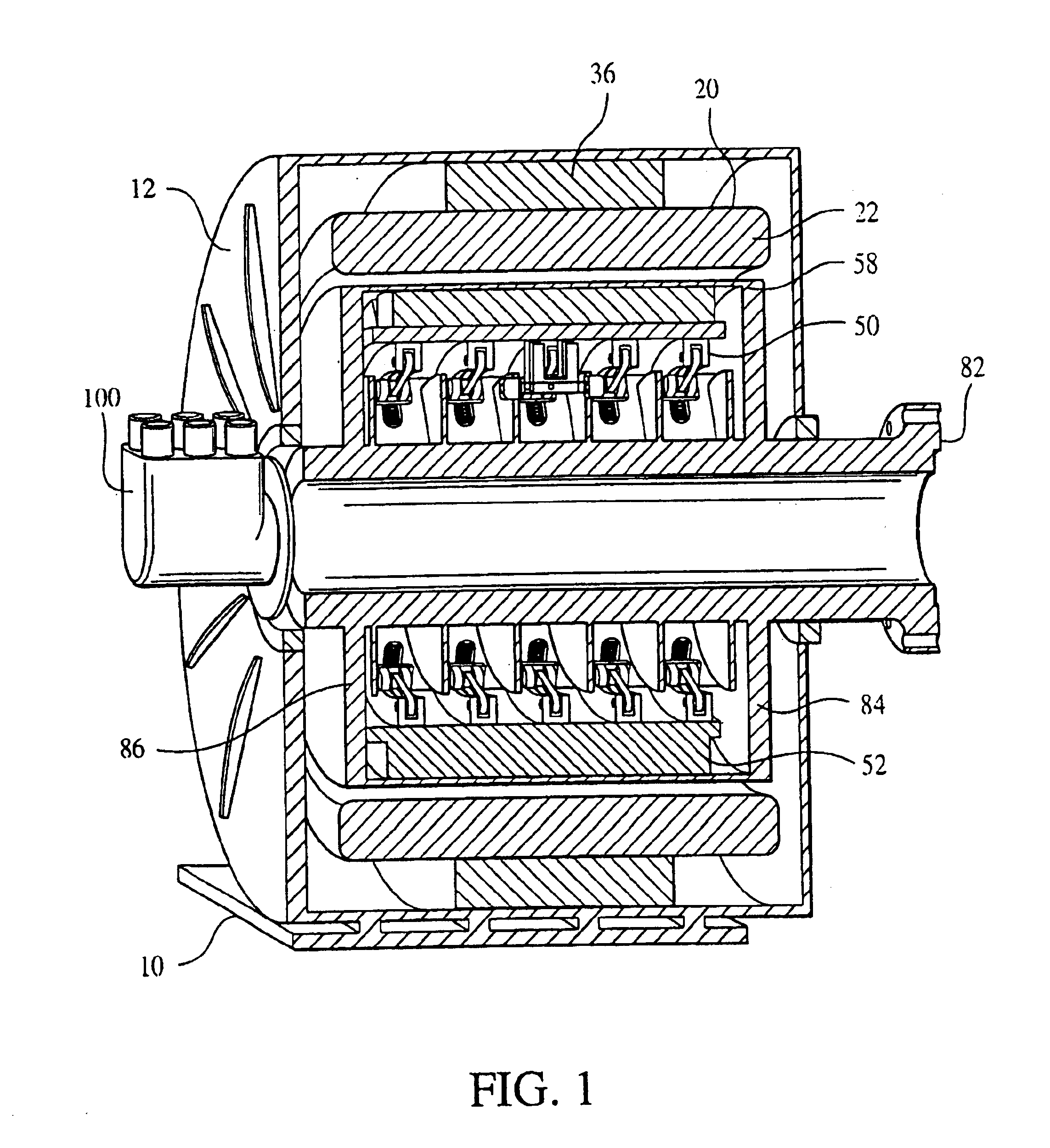Stator coil assembly for superconducting rotating machines
a superconducting rotating machine and coil assembly technology, which is applied in the direction of windings, cooling/ventilation arrangement, magnetic circuit shape/form/construction, etc., can solve the problems of high dispersion, increase of magneto motive forces generated by windings, and increase of machine flux densities, so as to facilitate cooling
- Summary
- Abstract
- Description
- Claims
- Application Information
AI Technical Summary
Benefits of technology
Problems solved by technology
Method used
Image
Examples
Embodiment Construction
Referring to FIGS. 1 and 2, a superconducting synchronous motor 10 includes a rotor assembly 50 cooled by a cryogenic cooling system 100, here a Gifford McMahon (GM) cooling system, and surrounded by a stator assembly 20. Both the stator assembly 20 and the rotor assembly 50 are mounted in a housing 12 to protect the components and any users of the superconducting motor 10 and to transmit motor torques to the mounting foundation. As will be described in greater detail below, each of these components and assemblies have features which contribute toward both increasing the overall performance, as well as reducing the overall size of motor 10. In particular, superconducting synchronous motor 10 can be shown to produce torque densities as high as 75 Nm / Kg or more at 500 RPM or less. Furthermore, such motors are expected to provide a greatly improved gap shear stress characteristic in a range between 15 psi and 100 psi.
Referring to FIGS. 1 and 3-5, the stator assembly 20 includes, in thi...
PUM
 Login to View More
Login to View More Abstract
Description
Claims
Application Information
 Login to View More
Login to View More - R&D
- Intellectual Property
- Life Sciences
- Materials
- Tech Scout
- Unparalleled Data Quality
- Higher Quality Content
- 60% Fewer Hallucinations
Browse by: Latest US Patents, China's latest patents, Technical Efficacy Thesaurus, Application Domain, Technology Topic, Popular Technical Reports.
© 2025 PatSnap. All rights reserved.Legal|Privacy policy|Modern Slavery Act Transparency Statement|Sitemap|About US| Contact US: help@patsnap.com



